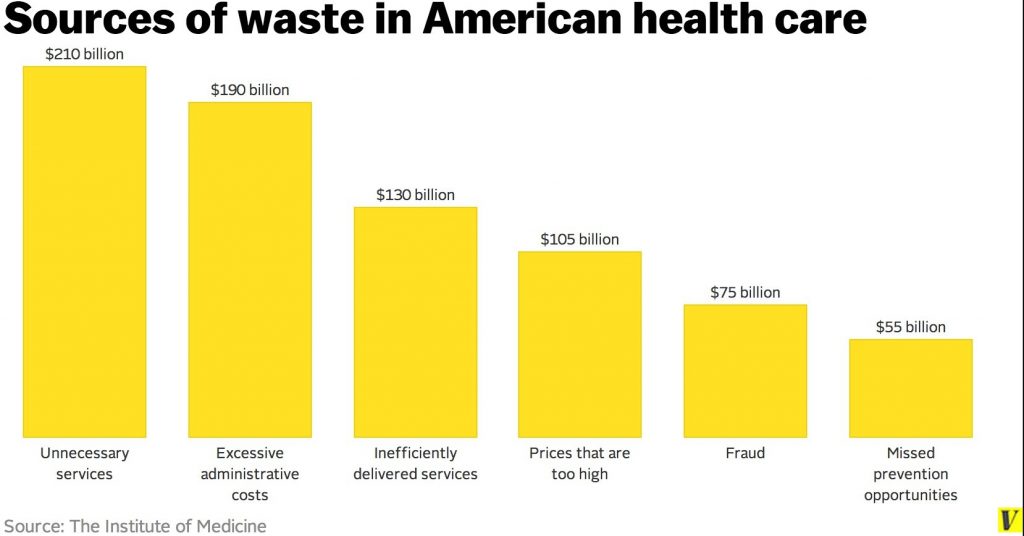26 Jul Health Literacy: An Employer Gold Mine
What is health literacy?
The Centers for Disease Control & Prevention (CDC) defines health literacy as the degree to which an individual has the capacity to obtain, communicate, process, and understand basic health information and services to make appropriate health decisions. This encompasses all sorts of health information, including chronic disease, unnecessary procedures, nutrition, or understanding an employee benefit plan, among many others.
Why does health literacy matter?
According to a 2015 JAMA article, only about 12% of adults in the United States are proficient in health literacy. This is significant when you consider that health-illiterate individuals spend 80% more on healthcare than their health literate-counterparts. Why is this? A big reason is that poor health literacy contributes to the amount of healthcare we waste in the U.S. When we say waste, we’re of course not referring to the bodily fluids that must be properly disposed of from a hospital, but rather the unnecessary spending on health and healthcare-related services, treatments, and procedures. When looking at this type of waste, a ProPublica report estimates that between $750-$765 BILLION (yes, you read that correctly) of healthcare spending is wasted each year in the United States – that’s nearly 25% of total healthcare spend. Of that total amount, $340 billion could potentially be avoided with better health literacy.

Just because it is medicine, doesn’t mean it is good for you.
One of the biggest drivers of waste in American healthcare is delivering unnecessary services ($210 billion). So what qualifies as an “unnecessary service”? An unnecessary service would be considered any treatment or procedure that doesn’t improve health outcomes, or that provide some value, but not worth the associated cost.
Let’s look at CT scans as an example, which are used for detecting bone and joint problems, or internal injuries such as tumors or infections. CT scans are often used to diagnose problems related low back pain; however, the clinical recommendation for having imaging done for low back pain is to wait 6 weeks before having the test done. You may be wondering, “Why does this matter? Better safe than sorry, right?” Well, not exactly. When looking at whether to get a CT scan, it’s important to weigh the potential side effects and the cost against the potential benefit to be expected. Did you know that a CT scan has as much as 500 times the radiation as a regular x-ray, and that exposure to radiation increases your chances of developing cancer (especially for kids)? Add in the fact that a CT scan can cost thousands of dollars each and immediately getting a CT scan for something like low back pain makes less sense. The U.S. Food and Drug Administration has estimated that 30-50% of CT scans done in the U.S. are unnecessary.
It’s also important to look at the other big cost driver, which are inefficiently-delivered services ($130 billion). This often means encouraging your employees to receive care in the correct setting, such as their primary care doctor, rather than the emergency room. Educating your employees on this facet alone could save you tens of thousands of dollars per year.
What can be done?
While there are multiple facets to fixing this problem of delivering unnecessary services, such as how the healthcare system operates, how providers are paid, and how educated your employees are, there is one of those facets you can affect – educating your employees. The initiative Choosing Wisely® was created in an attempt to start a conversation between patients and providers, but the uptake has been low. Fortunately, companies like Quizzify have packaged the information from Choosing Wisely, had it reviewed by the Harvard Medical School, and delivered the information in a fun, Jeopardy-style way to your employees. UnitedHealthcare also offers their free tool, Just Plain Clear®, which serves as a go-to source for understanding healthcare and health insurance terms.
Because we see the importance of helping our members educate their employees to lower costs, the Kansas Business Group on Health has partnered with Quizzify to offer our members a 10% on all services. Visit our Initiatives page, or contact us to learn more.

